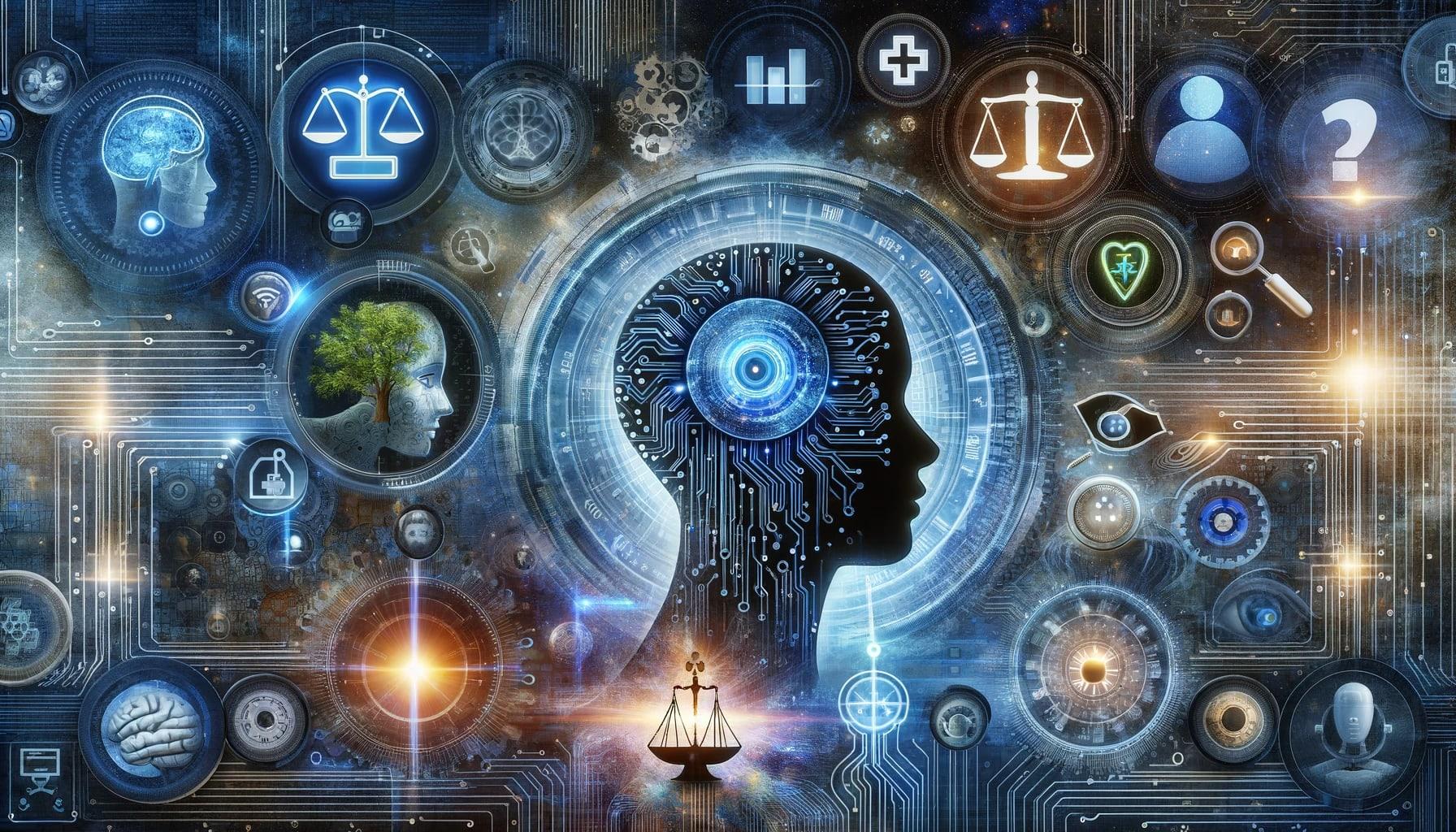WorkDifferentWithAI.com Academic Paper Alert!
Written by Feriel Khennouche, Youssef Elmir, Nabil Djebari, Yassine Himeur, Abbes Amira
Category: AI News
Article Section: AI in Communication and Engagement; Chatbots and Conversational AI
Publication Date: 2023-11-16
SEO Description: Explore the transformative effects of ChatGPT and generative chatbots on customer service, highlighting benefits, challenges, and future directions.
12014432
{12014432:QZE9F2S6}
items
1
modern-language-association
0
default
asc
954
https://workdifferentwithai.net/wp-content/plugins/zotpress/
%7B%22status%22%3A%22success%22%2C%22updateneeded%22%3Afalse%2C%22instance%22%3A%22zotpress-b994e9ddcabe09fe7937eaa26f00940b%22%2C%22meta%22%3A%7B%22request_last%22%3A0%2C%22request_next%22%3A0%2C%22used_cache%22%3Atrue%7D%2C%22data%22%3A%5B%7B%22key%22%3A%22QZE9F2S6%22%2C%22library%22%3A%7B%22id%22%3A12014432%7D%2C%22meta%22%3A%7B%22creatorSummary%22%3A%22Khennouche%20et%20al.%22%2C%22parsedDate%22%3A%222023-11-16%22%2C%22numChildren%22%3A2%7D%2C%22bib%22%3A%22%3Cdiv%20class%3D%5C%22csl-bib-body%5C%22%20style%3D%5C%22line-height%3A%202%3B%20padding-left%3A%201em%3B%20text-indent%3A-1em%3B%5C%22%3E%5Cn%20%20%3Cdiv%20class%3D%5C%22csl-entry%5C%22%3EKhennouche%2C%20Feriel%2C%20et%20al.%20%3Ci%3ERevolutionizing%20Customer%20Interactions%3A%20Insights%20and%20Challenges%20in%20Deploying%20ChatGPT%20and%20Generative%20Chatbots%20for%20FAQs%3C%5C%2Fi%3E.%20arXiv%3A2311.09976%2C%20arXiv%2C%2016%20Nov.%202023%2C%20%3Ca%20href%3D%27http%3A%5C%2F%5C%2Farxiv.org%5C%2Fabs%5C%2F2311.09976%27%3Ehttp%3A%5C%2F%5C%2Farxiv.org%5C%2Fabs%5C%2F2311.09976%3C%5C%2Fa%3E.%3C%5C%2Fdiv%3E%5Cn%3C%5C%2Fdiv%3E%22%2C%22data%22%3A%7B%22itemType%22%3A%22preprint%22%2C%22title%22%3A%22Revolutionizing%20Customer%20Interactions%3A%20Insights%20and%20Challenges%20in%20Deploying%20ChatGPT%20and%20Generative%20Chatbots%20for%20FAQs%22%2C%22creators%22%3A%5B%7B%22creatorType%22%3A%22author%22%2C%22firstName%22%3A%22Feriel%22%2C%22lastName%22%3A%22Khennouche%22%7D%2C%7B%22creatorType%22%3A%22author%22%2C%22firstName%22%3A%22Youssef%22%2C%22lastName%22%3A%22Elmir%22%7D%2C%7B%22creatorType%22%3A%22author%22%2C%22firstName%22%3A%22Nabil%22%2C%22lastName%22%3A%22Djebari%22%7D%2C%7B%22creatorType%22%3A%22author%22%2C%22firstName%22%3A%22Yassine%22%2C%22lastName%22%3A%22Himeur%22%7D%2C%7B%22creatorType%22%3A%22author%22%2C%22firstName%22%3A%22Abbes%22%2C%22lastName%22%3A%22Amira%22%7D%5D%2C%22abstractNote%22%3A%22In%20the%20rapidly%20evolving%20domain%20of%20artificial%20intelligence%2C%20chatbots%20have%20emerged%20as%20a%20potent%20tool%20for%20various%20applications%20ranging%20from%20e-commerce%20to%20healthcare.%20This%20research%20delves%20into%20the%20intricacies%20of%20chatbot%20technology%2C%20from%20its%20foundational%20concepts%20to%20advanced%20generative%20models%20like%20ChatGPT.%20We%20present%20a%20comprehensive%20taxonomy%20of%20existing%20chatbot%20approaches%2C%20distinguishing%20between%20rule-based%2C%20retrieval-based%2C%20generative%2C%20and%20hybrid%20models.%20A%20specific%20emphasis%20is%20placed%20on%20ChatGPT%2C%20elucidating%20its%20merits%20for%20frequently%20asked%20questions%20%28FAQs%29-based%20chatbots%2C%20coupled%20with%20an%20exploration%20of%20associated%20Natural%20Language%20Processing%20%28NLP%29%20techniques%20such%20as%20named%20entity%20recognition%2C%20intent%20classification%2C%20and%20sentiment%20analysis.%20The%20paper%20further%20delves%20into%20the%20customization%20and%20fine-tuning%20of%20ChatGPT%2C%20its%20integration%20with%20knowledge%20bases%2C%20and%20the%20consequent%20challenges%20and%20ethical%20considerations%20that%20arise.%20Through%20real-world%20applications%20in%20domains%20such%20as%20online%20shopping%2C%20healthcare%2C%20and%20education%2C%20we%20underscore%20the%20transformative%20potential%20of%20chatbots.%20However%2C%20we%20also%20spotlight%20open%20challenges%20and%20suggest%20future%20research%20directions%2C%20emphasizing%20the%20need%20for%20optimizing%20conversational%20flow%2C%20advancing%20dialogue%20mechanics%2C%20improving%20domain%20adaptability%2C%20and%20enhancing%20ethical%20considerations.%20The%20research%20culminates%20in%20a%20call%20for%20further%20exploration%20in%20ensuring%20transparent%2C%20ethical%2C%20and%20user-centric%20chatbot%20systems.%22%2C%22genre%22%3A%22%22%2C%22repository%22%3A%22arXiv%22%2C%22archiveID%22%3A%22arXiv%3A2311.09976%22%2C%22date%22%3A%222023-11-16%22%2C%22DOI%22%3A%22%22%2C%22citationKey%22%3A%22%22%2C%22url%22%3A%22http%3A%5C%2F%5C%2Farxiv.org%5C%2Fabs%5C%2F2311.09976%22%2C%22language%22%3A%22%22%2C%22collections%22%3A%5B%5D%2C%22dateModified%22%3A%222023-11-25T20%3A35%3A16Z%22%7D%7D%5D%7D
Khennouche, Feriel, et al.
Revolutionizing Customer Interactions: Insights and Challenges in Deploying ChatGPT and Generative Chatbots for FAQs. arXiv:2311.09976, arXiv, 16 Nov. 2023,
http://arxiv.org/abs/2311.09976.
AI-Generated Paper Summary
Generated by Ethical AI Researcher GPT
Keywords
Revolutionizing Customer Interactions, ChatGPT, Generative Chatbots, Natural Language Processing, Ethical Considerations
Author’s Abstract
In the rapidly evolving domain of artificial intelligence, chatbots have emerged as a potent tool for various applications ranging from e-commerce to healthcare. This research delves into the intricacies of chatbot technology, from its foundational concepts to advanced generative models like ChatGPT. We present a comprehensive taxonomy of existing chatbot approaches, distinguishing between rule-based, retrieval-based, generative, and hybrid models. A specific emphasis is placed on ChatGPT, elucidating its merits for frequently asked questions (FAQs)-based chatbots, coupled with an exploration of associated Natural Language Processing (NLP) techniques such as named entity recognition, intent classification, and sentiment analysis. The paper further delves into the customization and fine-tuning of ChatGPT, its integration with knowledge bases, and the consequent challenges and ethical considerations that arise. Through real-world applications in domains such as online shopping, healthcare, and education, we underscore the transformative potential of chatbots. However, we also spotlight open challenges and suggest future research directions, emphasizing the need for optimizing conversational flow, advancing dialogue mechanics, improving domain adaptability, and enhancing ethical considerations. The research culminates in a call for further exploration in ensuring transparent, ethical, and user-centric chatbot systems.
Read the full paper here
